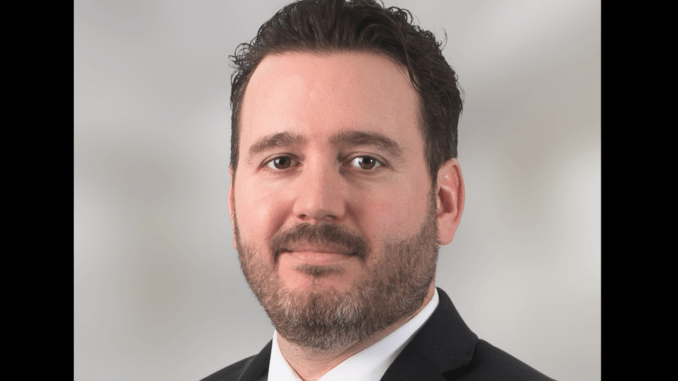
Does the approach to legal tech differ in the US compared to the UK? Artificial Lawyer spoke to Conan Hines, Senior Legal Technology Advisor at Clifford Chance in New York, to get a feel for how things work on the innovation front on the other side of the Pond.
But, before we dive in, here’s some context. Beyond eDiscovery and the development of KM assets, the view among several transatlantic legal tech folk this site has spoken to is that US firms can sometimes be less excited about changing things on the transactional side than some of the largest UK-based firms. That picture does seem to be evolving now, e.g. see the launch of Cleary X, but generally, top commercial lawyers in the US have not felt quite as much pressure until recently to rethink how they do deals.
So, with that in the background…..and from a vantage point within a global law firm’s office in New York, this is how Hines has experienced things.
‘My work here is very much about transactions, litigation in the US is already very tech-led,’ Hines noted.
He added that Clifford Chance’s legal tech stack is very well developed, especially if you look to the much larger London base and also other offices across the 3,300-lawyer firm for applications that could be used as part of a deal, from drafting, to deal management, to transactional review and more.
He noted that they ‘have everything already’ and reels off a number of well-known legal tech brands. Buying the tools in the first place is not the challenge for this multi-billion dollar revenue global law firm. In which case, Hines’ job is not so much about testing out totally new things, but rather getting the lawyers in the US to make use of what they already have, or at least proving to them that these tools have value.
‘Half of my job is about using the current tech stack and helping with adoption. I don’t have to spend time researching tools. So, that means I get to work with lawyers most of the day,’ he explained.
How To Get Adoption?
This site then asks the fundamental question: how do you drive adoption? Hines responded that while the central tech functions of large firms have been doing pioneering work, getting lawyers to put to use tools that actually change how they work is a different story.
‘For me, it’s about building relationships [with the lawyers]. It’s about building trust. You have to be an adviser, not a salesperson. You have to let them drive the change,’ he said.
He noted that often the focus is on low-hanging fruit in terms of what the lawyers in New York want help with, such as making better use of data rooms, or using eSignatures.
And the more advanced tools that interpose themselves into the actual work process?
‘You find it comes down to personality. Some say: this is about hours, so we will focus on hours,’ he observed.
Hines also stated on the point about hours that even if tech does save time, it won’t really change the lives of the associates, as there will always be more work to be done.
‘Can you really go home at 8PM? I’d say ‘not always’ or ‘not necessarily’. Because that first time you implement the tech you might be able to go home. But once it’s embedded the work will pile back up,’ he added.
(To which this site would add two points: this holds if the clients keep sending you that much work and also if they don’t keep asking you to build in more efficiency, e.g. can you now send that process part of the deal to an ALSP instead? If that changes then the overflowing fountain of deal work could be trimmed a little.)
Hines also explained how his focus is often on talking to junior lawyers so that he can help to pilot and prove the value of certain tech tools. That in turn filters upwards to the partners, who then might mention it to the clients.
‘What I say is that by partnering with me you can help to avoid writing off time, everyone can work better, and also alleviate friction,’ he said.
Does it work? It would seem that the answer here is: sometimes. But the overall message is that Hines is smoothing the way for tech adoption, rather than all of the partners lining up to demand he help them with major changes.
Transatlantic
So, does Hines find that things are different in the US, at least with transformative tech that changes deals?
‘The UK and US are different? Yes, totally. And the clients seem different,’ he noted and stressed that there just is not the culture to really support major change – yet.
‘There is a feeling that there is a risk in trying something new and time is of the essence. You might say that things will be better [with a tech tool], but the lawyers want to move today on a deal,’ Hines explained.
I.e. they may be open to considering new ways of doing things, but M&A deals wait for no lawyer. There is work to be done….right….now.
But, one could then say that you have to start somewhere, otherwise we end up in a perpetual chicken-and-egg conundrum, with the lawyers waiting to see the proof that X tool will help, but never stopping the process long enough to see if X tool can actually help.
How do you break the cycle and change things?
Hines considered the point and suggested that it may be about training during legal education, or perhaps even CLE while working, that will help move the dial.
But, that said, he concluded: ‘People need senior lawyers to advocate for those tools. This is a work in progress.’